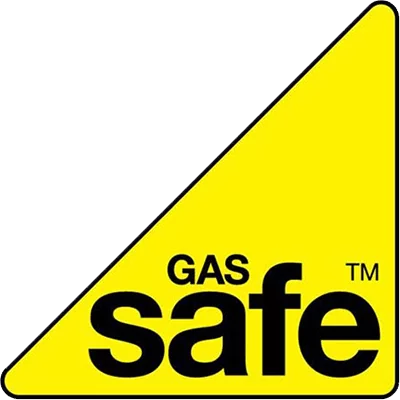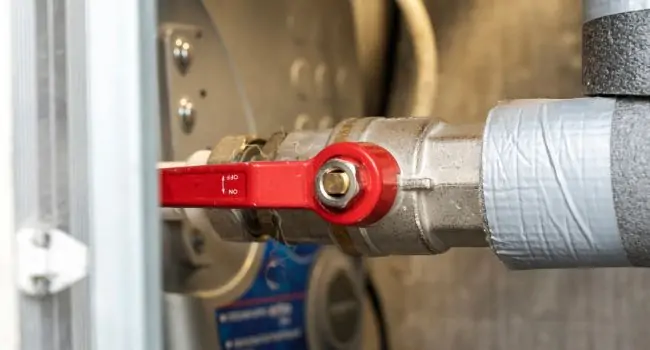Quickly turning off your water supply is often crucial in a plumbing emergency, especially when it involves understanding the different types of water shutoff valves in your system. This article dives into how and where to find your water shut off valve, guiding you through each step in a clear, jargon-free manner. While it’s a critical skill in urgent situations, we’ll also cover routine checks and when it’s best to consult 0800 Homefix, so you’re equipped for both immediate action and long-term upkeep.
Key Takeaways
Every household member should know the location and operation of the main water shut-off valve to control the home’s water supply in emergencies such as burst pipes.
Conducting regular maintenance on water shut-off valves, such as checking for leaks and corrosion, and replacing them if necessary, ensures they function properly when needed.
In case of a plumbing emergency or when professional repairs are required, it is crucial to be able to quickly and correctly operate the water shut-off valve to prevent further damage.
Understanding Your Home’s Water Shut Off Valve
Imagine encountering a plumbing disaster, such as a burst pipe or malfunctioning appliance that has started to flood your home. The initial wave of panic is quickly replaced by the realization that you can take charge and stop the water flow. By knowing how to operate the main shut-off valve, which acts as a crucial barrier against Damage, you can swiftly cut off the water supply and contain the situation.
This essential valve tends to be hidden inconspicuously—potentially located in your basement close to where the front wall stands, within an easily overlooked closet, or even outside your house—it awaits its turn for action when crisis strikes. Its function may seem straightforward, but it’s immensely important: this single valve, or shutoff valve, controls whether water circulates through your home’s entire plumbing system. Shutting down your household’s supply line with this shut-off mechanism carries no negative consequences and should never be hesitated upon if necessary for averting potential disasters.
Identifying the Main Water Shut Off Valve
Embarking on the search for your main water shut off valve may seem like an adventurous quest. Hidden within different parts of your home, potential hiding spots include:
Beneath the sink in your kitchen
Inside the airing cupboard
Near the front door under a staircase
Secreted in a utility room
Additionally, it’s important to be aware of the external stop tap, which plays a vital role in controlling the water supply from outside the house. This tap is usually intended for use by a qualified plumber or the water supplier and is crucial for managing potential issues that may arise with your water supply.
Acting as the central control to cut off your property’s water supply, swiftly pinpointing this valve is critical during urgent situations.
Outside, you might discover another crucial stop tap near where you would typically find your meter—buried beneath a cover along with sidewalk—which when twisted clockwise will cease all incoming water flow to your dwelling, protecting it from any possible damage due to flooding or leaks.
Types of Water Shut Off Valves
The assortment of valves used to shut off water supply can be compared to the multitude of keys that dangle from a custodian’s keychain, each distinguished by its own attributes and methods for operation. In structures with more history behind them, you might typically encounter the gate valve – it employs a metal barrier within itself alongside a wheel-shaped handle which moves up and down in order to govern the flow of water. Meanwhile, ball valves are lauded for their dependability and distinctive design, featuring a large metal valve with a lever handle. This lever handle opens and closes the valve completely with a short 1/4 turn, controlling a ball with a hole in it that pivots to either allow water flow when open or block it when closed. Ball valves are commonly used at the main water shutoff for the home, recognizable by their body below the handle, which usually has a thicker middle section to accommodate the ball inside. They’re frequently installed in newer homes or systems that have undergone renovations.
Operational differences aside – such as gate valves necessitating multiple rotations during use so they don’t become stiff over time, an issue not as common with ball valves, both varieties achieve regulation of fluid movement via turning actions. For those applications outside buildings where instant cessation is paramount, some stop taps only require being twisted one quarter way round thanks mainly to advancements in material engineering—these stand out because you can readily determine if they’re on or off based on whether their levers align with or sit perpendicular to the respective pipes they control.
Internal Stop Tap Operation and Usage
The internal stop tap plays a crucial role in managing your home’s water supply, usually found beneath the kitchen sink. This vital valve acts as the guardian of your household’s water flow, where a swift clockwise twist can stave off potential flooding and keep minor issues from escalating.
Acting as an integral component for localized control over water distribution, this internal stop allows you to carry out maintenance or repairs while avoiding interference with the whole system’s operation. With its straightforward accessibility and functionality, it is an essential asset for any homeowner.
When to Use Your Water Shut Off Valve
At times, shutting off the main water valve is a critical and urgent task. Should a pipe burst, it’s essential to quickly close the valve to stop the flow of water and minimize additional harm. Similarly, before beginning any repair work on plumbing—like mending a broken water pipe—it’s crucial to cut off the supply of water to prevent damage.
Even if there isn’t an overt emergency situation, subtle indicators like hearing running water when all taps are turned off might imply there’s a leak somewhere. In these instances, one should turn off their home’s or facility’s source of water and contact us, for efficient leak detection services as soon as possible in order to resolve the issue promptly and ensure peace of mind.
Preventative Measures Before Temperature Drops
As the cold of winter approaches with the shift in seasons, it’s critical to take proactive steps for protection. Ensuring that you turn off your home’s main water valve before a drop in temperature can be a vital action that helps avoid the havoc frozen and burst pipes might cause. It is equally essential to drain any remaining water from your pipes, as even minimal amounts can freeze, expand, and potentially lead to expensive damage.
Don’t disregard something as seemingly inconsequential as an attic trap door. By leaving this door open, you enable warmer air to flow around any uninsulated pipes or water tanks within the space. This prevents them from succumbing to freezing temperatures. These straightforward preventative measures could spell out whether you have a comfortably warm winter or deal with icy calamities.
Step-by-Step Guide to Using Your Shut Off Valve
Understanding the operation of your shut off valve is crucial for effectively managing a plumbing crisis, and it’s quite simple to do so with care. To ensure control in an emergency, you should:
Find the main valve.
Gently rotate it clockwise, exerting minimal pressure to prevent harming the valve.
In case of resistance, employ a work glove or wrench to enhance grip – but be cautious not to apply excessive force.
In instances where valves necessitate a unique key for their operation, always utilize the appropriate one. It’s important when following procedures tailored to your specific type of valve that you are careful about how much strength you use.
Turning Off the Valve
To close the water supply, it’s important to use the correct method. Gently rotate the stop valve clockwise until it comes to a halt. To reopen the water supply, turn the valve anti-clockwise. This principle holds true for various types of valves including compression and ball valves. Aim to exert even pressure while avoiding excessive force that might cause expensive damage.
Being considerate in handling ensures that your valve stays in good working order for times of urgent need. Whether you’re addressing a burst pipe or gearing up for plumbing work, employing finesse is key when manipulating these essential components.
After Shutting Off the Water
Once the water supply is turned off, it’s essential to expel any remaining pressure within the pipes. To achieve this, begin by opening taps at lower levels in order to reduce pressure and control the water flow—a crucial step when performing plumbing repairs. This ensures that no lingering water creates complications when reactivating the system.
While you’re reducing pressure in your plumbing, use this chance to check for leaks throughout your plumbing infrastructure. Taking such a precautionary approach can help identify hidden problems before they escalate. And don’t forget—before turning back on your water supply—to detach aerators from faucets so as not to block them with debris that might have been shaken loose during repairs or inspection of the system.
Emergency Situations and Quick Responses
In the event of an emergency, prompt action is crucial. Knowing where your water shut-off valves are located and understanding how to operate them can greatly minimize harm caused by plumbing catastrophes such as pipes bursting or sewer backflows. A swift reaction not only conserves water, but also helps protect your house from considerable damage.
Making quick, informed decisions highlights the importance of being acquainted with your home’s plumbing system controls. It’s essential to identify the location of these valves right when you move into a new residence or if this information has previously eluded you—it’s an effortless measure that yields substantial tranquility.
Creating a Property Inspection Report
The property inspection report acts not just as an inventory, but also as a strategic tool for handling emergencies. It contains detailed information about your plumbing system that helps in swiftly addressing problems and preparing for potential upgrades or repairs. Consider it a roadmap to the critical functions of your house, providing direction when urgent situations arise.
Recording the positions of shutoff valves arms you with essential knowledge so that swift measures can be taken in times of crisis. Such preparation underscores the saying ‘knowledge is power,’ allowing prompt interventions using these valves to stop water from becoming a harmful intruder within your property’s plumbing system.
Regular Maintenance of Your Water Shut Off Valves
Just as a diligent sendinel regularly checks their post, it’s important for your water shut-off valves to receive consistent inspections to guarantee they’re prepared when needed. Failure to do so can result in them not functioning properly during critical moments. By scheduling a monthly review of the valve’s functionality, you take an easy but crucial step in preserving the integrity of your plumbing system.
Proper upkeep involves more than just superficial observation. It includes searching for any signs of leakage, ensuring that all connections are tightened securely, and even contemplating valve replacement every ten years or so. Taking these steps helps prolong the lifespan of your valves and safeguards against severe plumbing issues which could lead to substantial repair costs.
Checking for Leaks and Corrosion
Be vigilant for any subtle indications that a valve may be malfunctioning. Watch out for signs such as:
Corrosion
Stiffness when trying to operate the valve
Damp spots or water stains indicating potential leakage
Unusual sounds emanating from the valve
Irregularity in water flow
These symptoms could point towards underlying problems with your valves.
Should you encounter these warning signals, it’s advisable to examine the situation more closely. If adjusting the packing nut does not rectify a leak issue, or if repairing appears too complex for a simple intervention, then enlisting the expertise of a qualified plumber, like us, is wise. They have the skills necessary to evaluate and remedy issues ensuring that your valves function properly and protect against water-related harm.
Contacting a Professional Plumber like us.
Even the most attentive homeowners occasionally need to rely on a professional plumber’s skill set. Struggling with an internal stop tap or encountering low water pressure are indicators that it’s time to consult an expert. Unpleasant smells, sluggish drains, or gurgling noises represent more than mere irritations. They signify problems requiring one of our qualified plumber’s intervention.
If appliances tied to your plumbing system start acting up, having a plumber inspect them can uncover and fix any hidden problems. Keep in mind that the scope of a plumber’s responsibilities is not limited to emergency responses, but also encompasses proactive maintenance and new installations which can significantly improve the overall functioning of your home’s plumbing system.
Summary
As we wrap up, it’s clear that the humble water shut-off valve is a cornerstone of home safety and maintenance. From locating and identifying different types, learning when and how to use them, to understanding the need for regular checks and when to seek our professional help, this guide has equipped you with the knowledge to master your emergency plumbing. Take this wisdom, and let it empower you to protect your home with confidence and foresight.
Frequently Asked Questions
Where is my main water shut-off valve located?
In the event of emergencies, it is essential to know where to find the main water shut-off valve. It may be situated in your basement along the front wall, inside a closet close to your front door, or externally near the house by your water meter.
Having this knowledge about the location of this critical valve ensures you can quickly halt your home’s water supply when necessary.
How do I shut off the water supply in an emergency?
In an emergency, when you need to stop the water supply, find the main shut-off valve for your water and rotate it in a clockwise direction until it is fully closed. If necessary, employ work gloves or utilize a wrench to assist with this action. Take care not to apply excessive force that might damage the valve.
What types of water shut-off valves might I find in my home?
In residential settings such as your home, various types of valves like gate valves, ball valves, and compression valves are used to manage the flow of water to fixtures that include sinks and toilets.
It’s advisable to familiarize yourself with these different valve varieties for the purpose of upkeep.
How often should I check my water shut-off valves?
It’s advisable to establish a monthly reminder to ensure your water shut-off valves are operating properly. Routine upkeep involves inspecting for any leaks, tightening fittings, and thinking about replacing them every five to ten years.
How often should I check my water shut-off valves?
It’s advisable to establish a monthly reminder to ensure your water shut-off valves are operating properly. Routine upkeep involves inspecting for any leaks, tightening fittings, and thinking about replacing them every five to ten years.
When should I contact a professional plumber?
You should contact us if you have difficulty operating the shut-off valve, notice weak water pressure, encounter unpleasant odors or slow drainage, or if appliances connected to the water system malfunction.
It’s important to address these issues promptly to prevent further damage.


